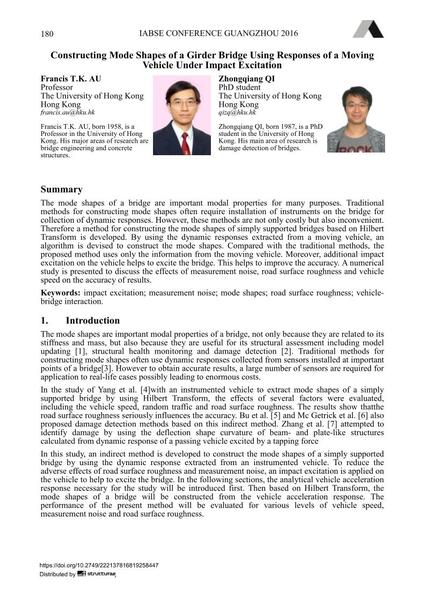Constructing Mode Shapes of a Girder Bridge Using Responses of a Moving Vehicle Under Impact Excitation

|
|
|||||||||||
Détails bibliographiques
| Auteur(s): |
Francis T. K. Au
Zhongqiang Qi |
||||
|---|---|---|---|---|---|
| Médium: | papier de conférence | ||||
| Langue(s): | anglais | ||||
| Conférence: | IABSE Conference: Bridges and Structures Sustainability - Seeking Intelligent Solutions, Guangzhou, China, 8-11 May 2016 | ||||
| Publié dans: | IABSE Conference, Guangzhou, China, 8 – 11 May 2016 | ||||
|
|||||
| Page(s): | 180-187 | ||||
| Nombre total de pages (du PDF): | 8 | ||||
| Année: | 2016 | ||||
| DOI: | 10.2749/222137816819258447 | ||||
| Abstrait: |
The mode shapes of a bridge are important modal properties for many purposes. Traditional methods for constructing mode shapes often require installation of instruments on the bridge for collection of dynamic responses. However, these methods are not only costly but also inconvenient. Therefore a method for constructing the mode shapes of simply supported bridges based on Hilbert Transform is developed. By using the dynamic responses extracted from a moving vehicle, an algorithm is devised to construct the mode shapes. Compared with the traditional methods, the proposed method uses only the information from the moving vehicle. Moreover, additional impact excitation on the vehicle helps to excite the bridge. This helps to improve the accuracy. A numerical study is presented to discuss the effects of measurement noise, road surface roughness and vehicle speed on the accuracy of results. |
||||
